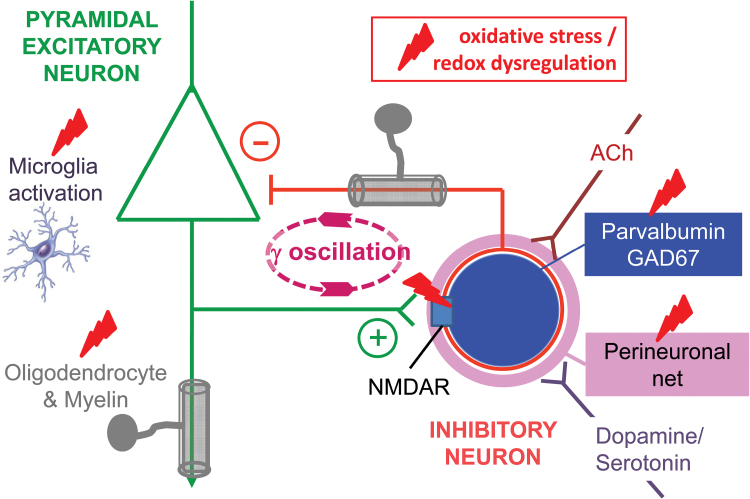Fig. 2.
Impact of oxidative stress/redox dysregulation on microcircuits. Schematic representation of the impact of oxidative stress/redox dysregulation on cortical microcircuits, including excitatory pyramidal and inhibitory parvalbumin-positive interneuron (PVI) connected reciprocally and supporting γ-oscillations. Oxidative stress/redox dysregulation interacts with inflammatory microglial cells, activating them, and with the N-methyl-d-aspartate receptors, reducing their activity, in both cases leading to a damaging potentiating effect. As a consequence, PVI surrounded by their perineuronal nets and myelin-forming oligodendrocytes are impaired, as manifested by alterations of local oscillations and distant synchronization. These cellular and molecular changes are known to alter critical periods timing. Likewise, microcircuits are affected by cholinergic and by catecholaminergic inputs.

